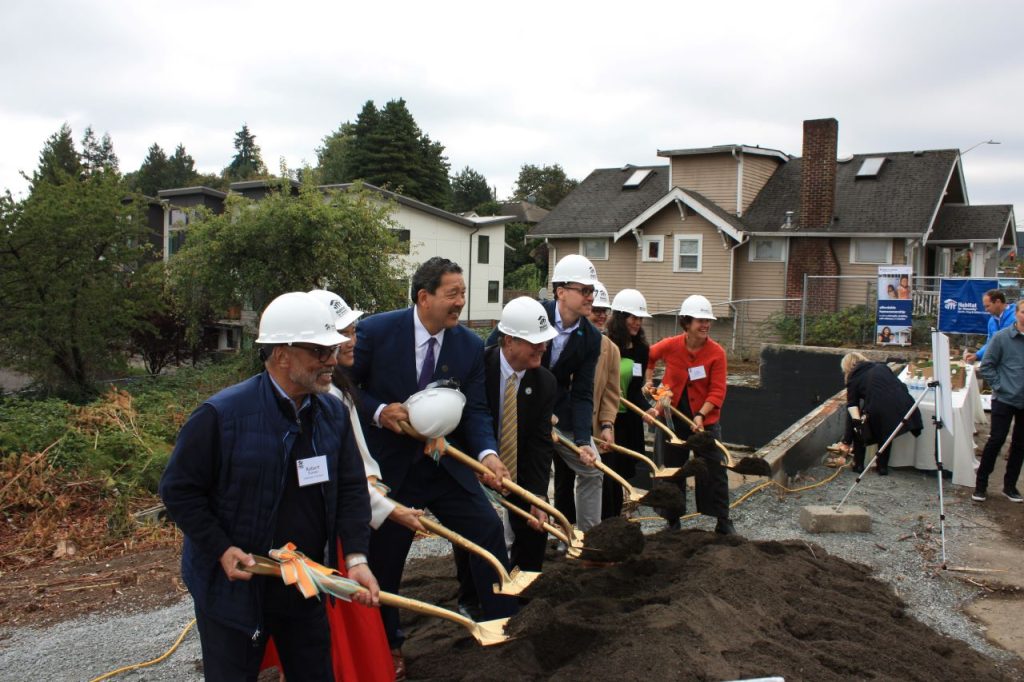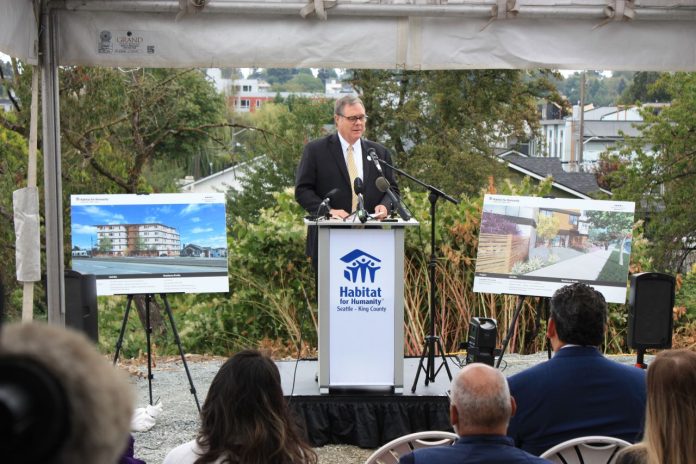
On Monday, Habitat for Humanity held a groundbreaking ceremony for 58 new homes in Columbia City, marking the largest project the organization has ever completed. Lieutenant Governor Denny Heck, Seattle Mayor Bruce Harrell, Seattle City Councilmember Tammy Morales, and an envoy from the Amazon Housing Equity Fund — which helped finance the project — joined Habitat to mark the occasion.
“This is the largest Habitat development in the history of the world anywhere,” Heck said Monday. “It’s very important because it shows that Habitat for Humanity is scaling up to meet the challenge. We all know that the projections are: our state needs 1.1 million new units in the next 20 years. We’re going to have to scale up our current efforts. Today is a prime example of that.”
Habitat noted the Columbia City condominium project surpassed the previous largest single-building project, the 56-unit Sydney House in the Bronx borough of New York. The nonprofit also recently broke ground on another large project in nearby Burien: the 40-home Miller’s Creek project. Overall, Habitat has about 320 homes in its development pipeline locally and its leaders said they hope to grow that number aggressively.
Traditionally, Habitat chapters have focused on building single family homes and townhomes, but Habitat for Humanity Seattle-King & Kittitas Counties is increasingly pivoting to condominium projects to boost production and overcome high land costs in the region. The 5022 MLK Way site is in a high-demand location just a four-minute walk from Columbia City’s Link light rail station.
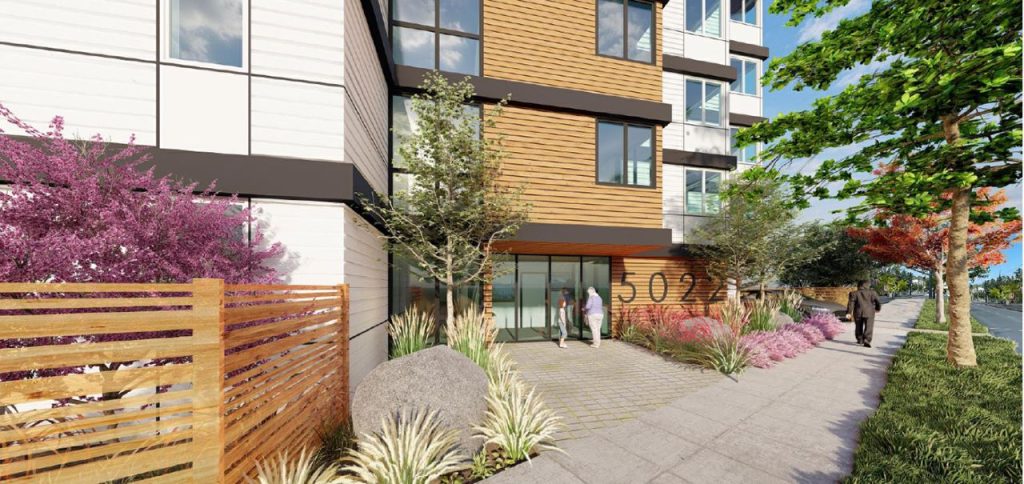
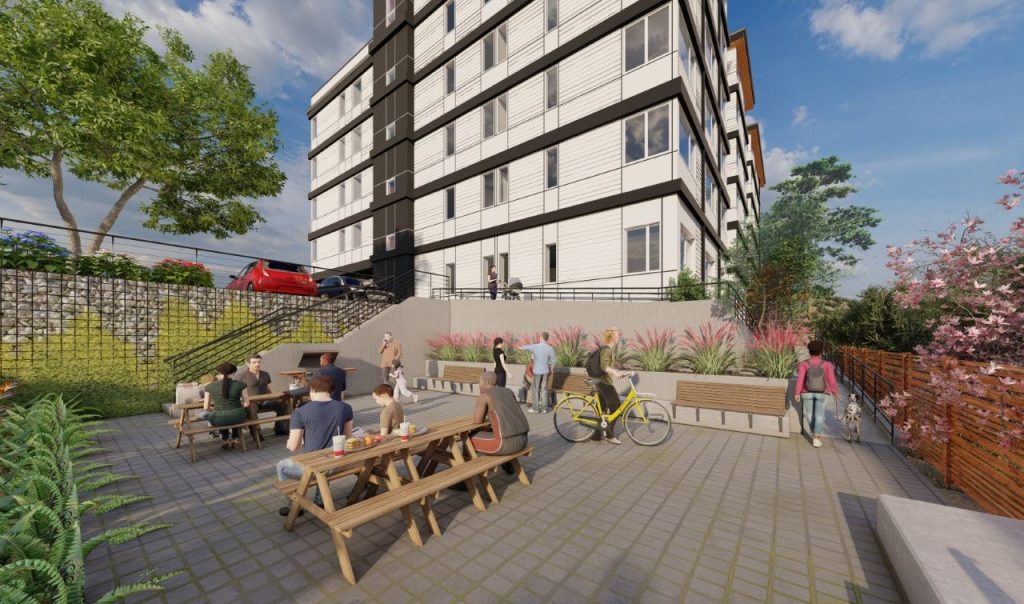
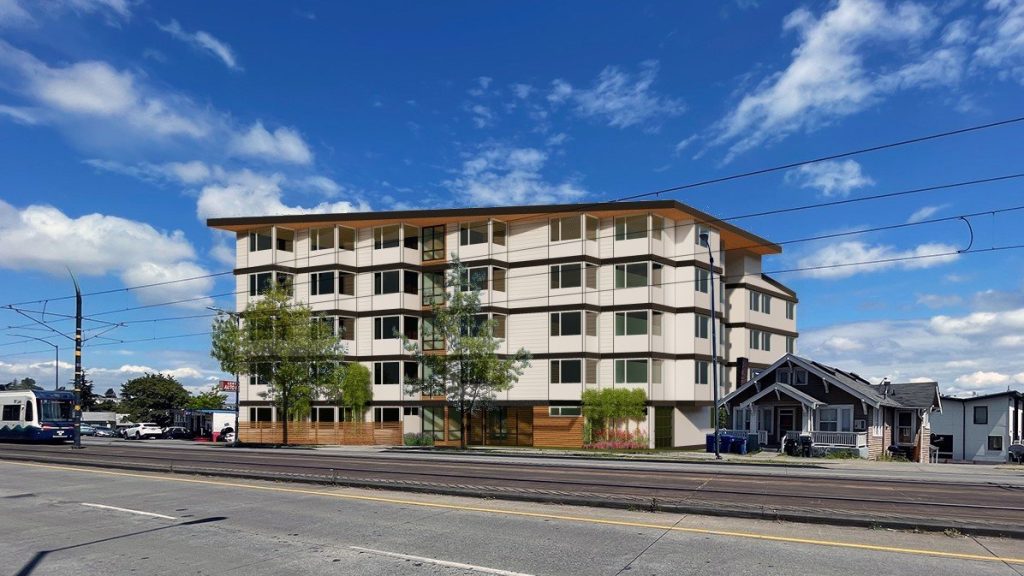
“5022 MLK capitalizes on smart density design with five stories of condominiums, including five studios, 26 one-bedroom units, and 27 two-bedroom units with homes ranging in size from 370 to 690 square-feet,” Habitat noted in their press release. “The project will also include a 2,000 square-foot outdoor courtyard designed to encourage a sense of shared community within the project.”
Habitat expects to complete the project in spring 2026, and open applications for condos in fall 2025. Homes will be aimed at families making less than 80% of the area median income (AMI) affordable homes with mortgages set at no more than 35% of their incomes. The building will be set up as a land trust, guaranteeing permanent affordability for future generations while still allowing residents to accrue equity via a fixed 1.5% annual rate.
Brett D’Antonio, CEO of Habitat for Humanity Seattle-King & Kittitas Counties, pointed out that part of what made the project work out financially was not needing to construct underground parking due to the close proximity of light rail, though plans do call for six surface parking spots. Seattle has eliminated residential parking mandates near frequent transit, but parking requirements are still in force outside frequent transit walksheds. The cost of adding parking can render projects infeasible to build, especially for affordable housing and on small lots like Habitat is utilizing.
“Being near transit, or right on transit, in this case, is a huge opportunity to take advantage of the investment the public made to be able to get around and not need a car,” D’Antonio told The Urbanist. “None of our condo buildings have parking. So we’re certainly looking for those opportunities.”
Habitat was able to snap up the land at a relatively good price with an all-cash offer of $1.35 million in June 2022. Some environmental remediation was needed on the site to clean up contamination from an old heating fuel tank, Habitat said, but it was still a prime site. A $7.5 million grant from billionaire Mackenzie Scott’s foundation made the deal possible, D’Antonio told the Puget Sound Business Journal. Habitat was able to braid that philanthropic gift together with public funds, including a state grant and a Seattle Office of Housing award, and below-market loans, including from Washington Trust Bank.
Mayor Harrell pointed to the importance of the Seattle Housing Levy in funding projects like 5022 MLK. The housing levy first passed in 1986, but it has repeatedly been renewed and increased since then, most recently the $970 million measure Harrell proposed and voters approved resoundingly in 2023.
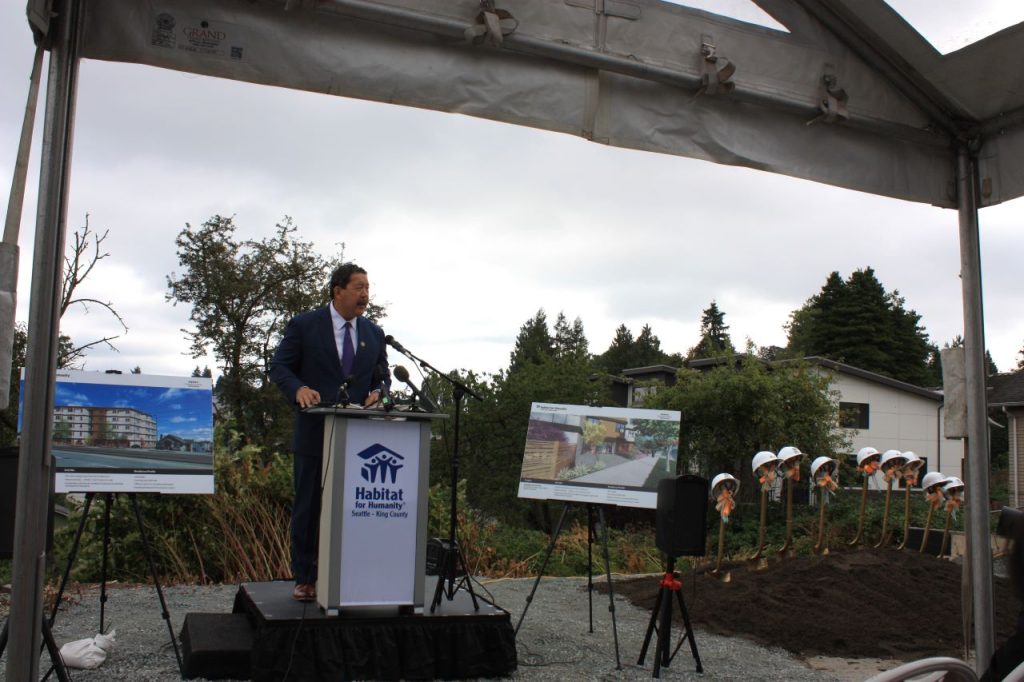
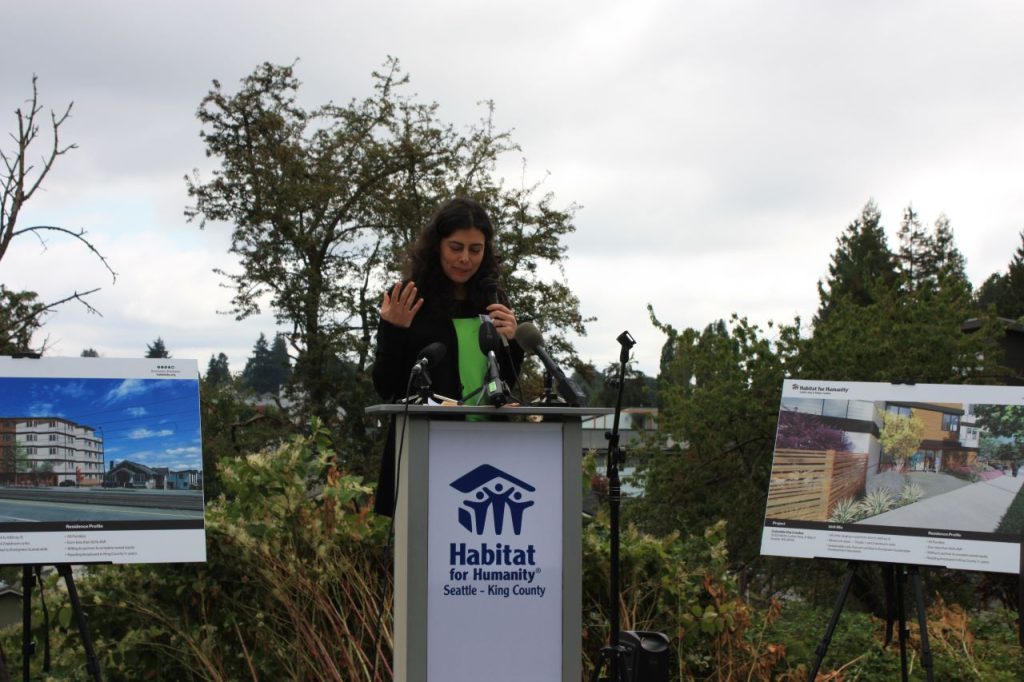
“Projects like this will ensure that low-income families and people of color always have a place to call home in our city of Seattle. That is critical. This project, of course, was supported by $7.4 million from the city’s housing levy, which was overwhelmingly reviewed by the city voters,” Harrell said. “Today, it is estimated over 16,000 people are living in homes funded by the housing levy. The new levy that was passed is estimated to create over 3,000 units of affordable rental and for-sale homes.”
Lily Kim, Housing Strategy and Impact Manager for the Amazon Housing Equity Fund, stressed the commitment Amazon was making to building affordable housing near its major offices, with its $3.6 billion housing fund pledge.
“So far, we’ve committed over $780 million to help fund the creation or preservation of more than 8,600 homes across the Puget Sound, and we are excited to continue to do more,” Kim said. “And so partnerships like the one that we celebrate today help create long-term affordability and opportunity for hardworking individuals and families in Seattle and at Amazon, we recognize the importance of collaboration between public and private sectors to create more affordable housing.”
With interest rates at record highs, the low-interest financing that state and philanthropic partners offer can be the difference between a project penciling out as feasible or not.
The slowing of market-rate development, as office construction has plummeted and housing starts have tapered off in a high-interest rate environment, has also created some silver linings for nonprofit builders and others able to keep forging ahead.
“In terms of construction cost overall, we’re seeing materials kind of level off,” D’Antonio said. “I mean, they’re certainly still up from 2019, but they’re not climbing. And then we’re seeing both availability of construction labor and pricing come back to be a little bit more competitive than what we were seeing a year or two ago, and that just may be an indication of some slowing in for-profit development that is a benefit to us, at least at this point in time.”
Nonprofits like Habitat hope to continue to scale up homebuilding if conditions continue to allow.
Doug Trumm is publisher of The Urbanist. An Urbanist writer since 2015, he dreams of pedestrian streets, bus lanes, and a mass-timber building spree to end our housing crisis. He graduated from the Evans School of Public Policy and Governance at the University of Washington in 2019. He lives in Seattle's Fremont neighborhood and loves to explore the city by foot and by bike.

